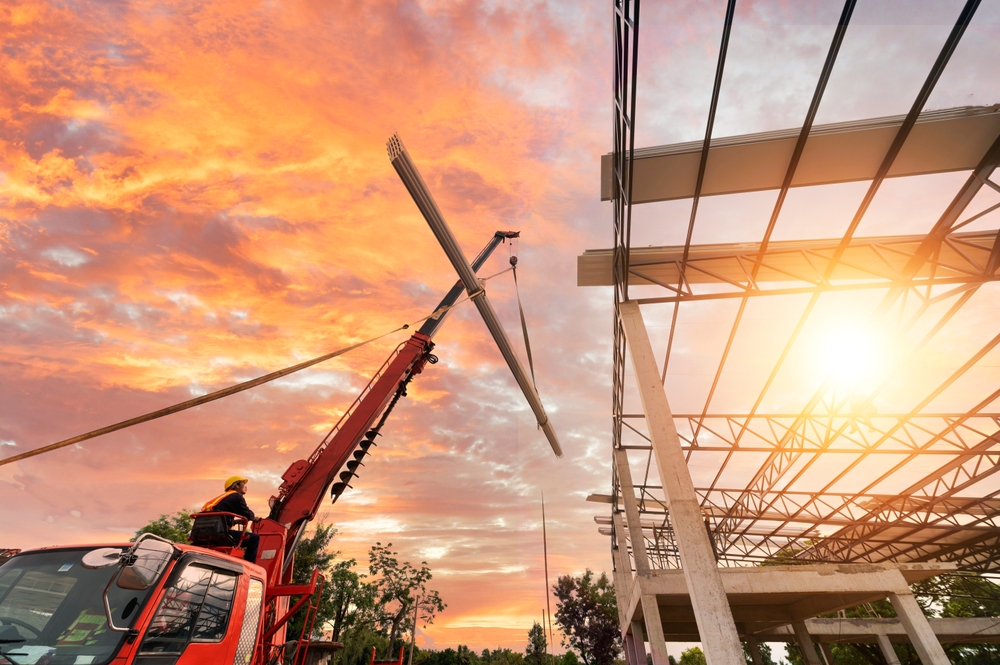

The structural steel industry, a backbone of modern construction and infrastructure, is undergoing significant transformations. These changes, driven by technological advancements, environmental considerations, and evolving market demands, are shaping the future of the sector. In this blog, we will explore the key changes to know in the structural steel industry, focusing on innovations, sustainability efforts, and the evolution of steel erection.
Technological Advancements in Structural Steel
Automation and Robotics
One of the most impactful changes in the structural steel industry is the increasing use of automation and robotics. Automation technologies, such as CNC (Computer Numerical Control) machines, are revolutionizing the way steel is cut, shaped, and assembled. These machines offer unparalleled precision and efficiency, reducing human error and speeding up production times.
Robotics, particularly in the area of welding and assembly, are enhancing productivity and safety. Automated welding robots, for example, can work continuously without fatigue, producing high-quality welds at a faster rate than manual welding.
Building Information Modeling (BIM)
Building Information Modeling (BIM) has become a cornerstone of modern construction, and its impact on the structural steel industry is profound. BIM allows for the creation of detailed 3D models that include all the structural components, enabling better visualization, planning, and collaboration among stakeholders.
Through BIM, project teams can identify potential issues before construction begins, reducing the likelihood of costly errors and rework. It also facilitates better coordination between different trades, ensuring that steel components fit precisely with other building elements.
Advanced Materials and Techniques
The development of advanced materials and construction techniques is another significant change in the structural steel industry. High-strength, low-alloy (HSLA) steels, for instance, offer greater strength and durability while being lighter than traditional steel. This innovation allows for the construction of more robust and efficient structures.
Additionally, techniques such as modular construction, where steel components are prefabricated off-site and assembled on-site, are gaining popularity. This method reduces construction time, minimizes waste, and improves overall quality control.
Sustainability and Environmental Considerations
Green Steel Production
As the world becomes more environmentally conscious, the structural steel industry is making strides toward sustainability. One of the key changes is the shift toward green steel production. This involves using recycled materials and renewable energy sources in the steel-making process to reduce carbon emissions.
Electric arc furnaces (EAFs), which use scrap steel as the primary raw material, are becoming more prevalent. EAFs produce significantly lower emissions compared to traditional blast furnaces, making them a more sustainable option.
Energy Efficiency in Steel Plants
Improving energy efficiency in steel plants is another critical focus area. Advanced technologies, such as waste heat recovery systems, are being implemented to capture and reuse energy that would otherwise be lost. This not only reduces the environmental impact but also lowers operational costs.
Certification and Standards
The adoption of sustainability certification and standards is also influencing the structural steel industry. Programs such as LEED (Leadership in Energy and Environmental Design) and the Sustainable Steel Council’s certification encourage the use of eco-friendly practices and materials. Adhering to these standards not only benefits the environment but also enhances a company’s reputation and marketability.
Evolution of Steel Erection
Safety Innovations
The evolution of steel erection has brought about significant improvements in safety practices. The implementation of advanced safety equipment and procedures has reduced the risk of accidents on construction sites. For example, the use of fall protection systems, such as harnesses and guardrails, has become standard practice.
Additionally, the development of exoskeletons and wearable technology is helping to reduce the physical strain on workers, further enhancing safety and productivity.
Prefabrication and Modular Construction
Prefabrication and modular construction techniques are revolutionizing steel erection. By assembling components in a controlled factory environment, quality can be better managed, and construction times are shortened. These methods also reduce the amount of on-site labor required, minimizing exposure to hazardous conditions.
Training and Workforce Development
Investing in training and workforce development is crucial for the evolution of steel erection. As new technologies and methods are introduced, workers need to be adequately trained to use them effectively. Many companies are implementing comprehensive training programs that cover everything from operating advanced machinery to understanding BIM.
Collaboration and Communication
The evolution of steel erection is also being driven by improved collaboration and communication among project stakeholders. Integrated project delivery (IPD) and other collaborative approaches are fostering better teamwork and coordination. This leads to more efficient workflows and higher-quality outcomes.
Market Trends and Economic Factors
Globalization and Supply Chain Dynamics
Globalization has significantly impacted the structural steel industry, influencing both supply chains and market dynamics. The ability to source materials and components from around the world has led to increased competition and more options for consumers. However, it has also introduced challenges such as fluctuating prices and supply chain disruptions.
Demand for Infrastructure Development
The demand for infrastructure development is a major driver of change in the structural steel industry. Urbanization, population growth, and the need for modern transportation systems are fueling the need for new buildings, bridges, and other structures. This demand is pushing the industry to innovate and improve efficiency to meet tight timelines and budgets.
Economic Policies and Trade Regulations
Economic policies and trade regulations play a significant role in shaping the structural steel industry. Tariffs, trade agreements, and government incentives can all influence the cost and availability of steel. Staying informed about these factors is crucial for companies to navigate the market successfully.
The Future of the Structural Steel Industry
Embracing Digital Transformation
The future of the structural steel industry lies in embracing digital transformation. Technologies such as the Internet of Things (IoT), artificial intelligence (AI), and machine learning are poised to revolutionize the way steel is produced, managed, and erected. These technologies can provide real-time data and analytics, leading to better decision-making and optimized processes.
Fostering Innovation
Continuous innovation is essential for the industry’s growth and competitiveness. Companies that invest in research and development to create new materials, techniques, and technologies will be better positioned to meet future challenges and opportunities.
Enhancing Sustainability
Sustainability will remain a central focus for the structural steel industry. Ongoing efforts to reduce carbon footprints, improve energy efficiency, and promote recycling will be critical in ensuring the industry’s long-term viability.
Adapting to Market Changes
Finally, the ability to adapt to market changes will be a defining characteristic of successful companies in the structural steel industry. Whether it’s responding to shifts in demand, navigating economic fluctuations, or embracing new technologies, flexibility and resilience will be key.
Conclusion
The structural steel industry is undergoing significant changes driven by technological advancements, sustainability efforts, and evolving market demands. By staying informed and embracing these changes, companies can position themselves for success in this dynamic and essential industry.
Need a Steel Fabricator & Welding Shop In Visalia, CA?
Suburban Pipe & Steel, Inc. DBA Flint Construction. in Visalia, California, doing business as Flint Construction, has been family owned since 1957. We truly understand steel buildings. We design, fabricate, and install all phases of pipe and steel structures for every industry. Contact us today to find out more about our services, rates, and to schedule a consultation. You can even fax us your drawings so we can have a better idea of your vision. We look forward to exceeding your expectations.
